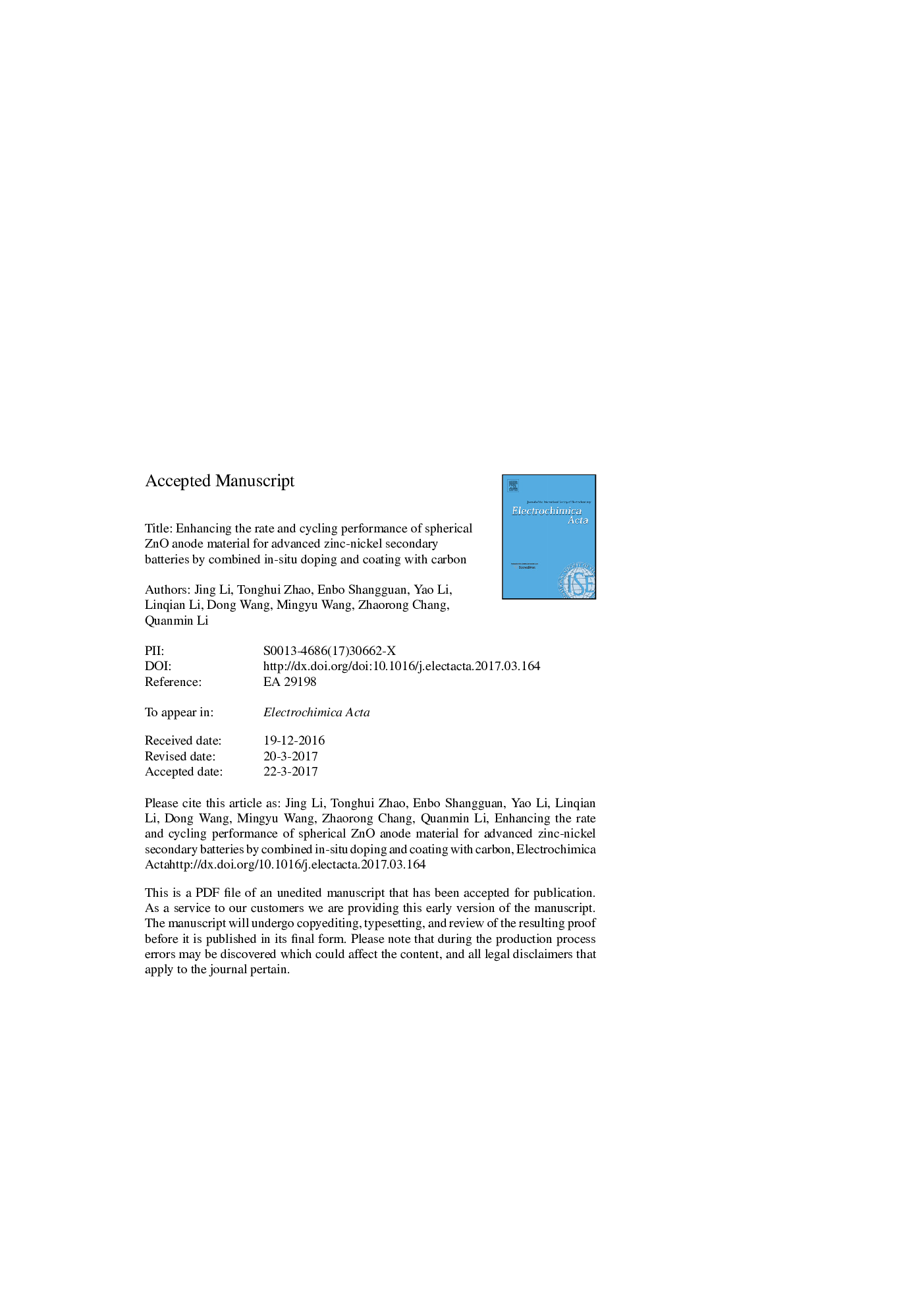| Article ID | Journal | Published Year | Pages | File Type |
|---|---|---|---|---|
| 4767242 | Electrochimica Acta | 2017 | 35 Pages |
Abstract
High-performance ZnO microspheres doped and coated with carbon has been successfully fabricated by a facile three-step process using trisodium citrate as doping carbon source and glucose as coating carbon source. Compared with carbon free ZnO precursor, the resulting ZnO-N2@Cmicrospheresexhibitsuperiorrateperformanceandenhancedcyclingstability.(*) At a rate of 10C (5000 mA gâ1), the ZnO-N2@C exhibits specific discharge capacity and volumetric capacities of 283.4 mAh gâ1 and 858.7 mAh cmâ3, respectively, while the values for the carbon free ZnO precursor are only 140.2 mAh gâ1 and 423.4 mAh cmâ3. After cycling 200 times at 500 mA gâ1, the obtained ZnO-N2@C can maintain a satisfying capacity of 508.2 mAh gâ1, corresponding to a superior capacity retention (94.7%). In contrast, carbon free ZnO can only deliver the capacity of 109.4 mAh gâ1 and a capacity retention of 24.7% after 200 cycles. This outstanding improvement is attributed to the synergistic effect of the combined in-situ doping and coating carbon, including reduced charge-transfer resistance, enhanced electrochemical reversibility, and better anti-corrosion capabilities. As a result, it is believed that ZnO-N2@C should be an attractive and promising anode material for high power Zinc-Nickel batteries.
Related Topics
Physical Sciences and Engineering
Chemical Engineering
Chemical Engineering (General)
Authors
Jing Li, Tonghui Zhao, Enbo Shangguan, Yao Li, Linqian Li, Dong Wang, Mingyu Wang, Zhaorong Chang, Quanmin Li,
